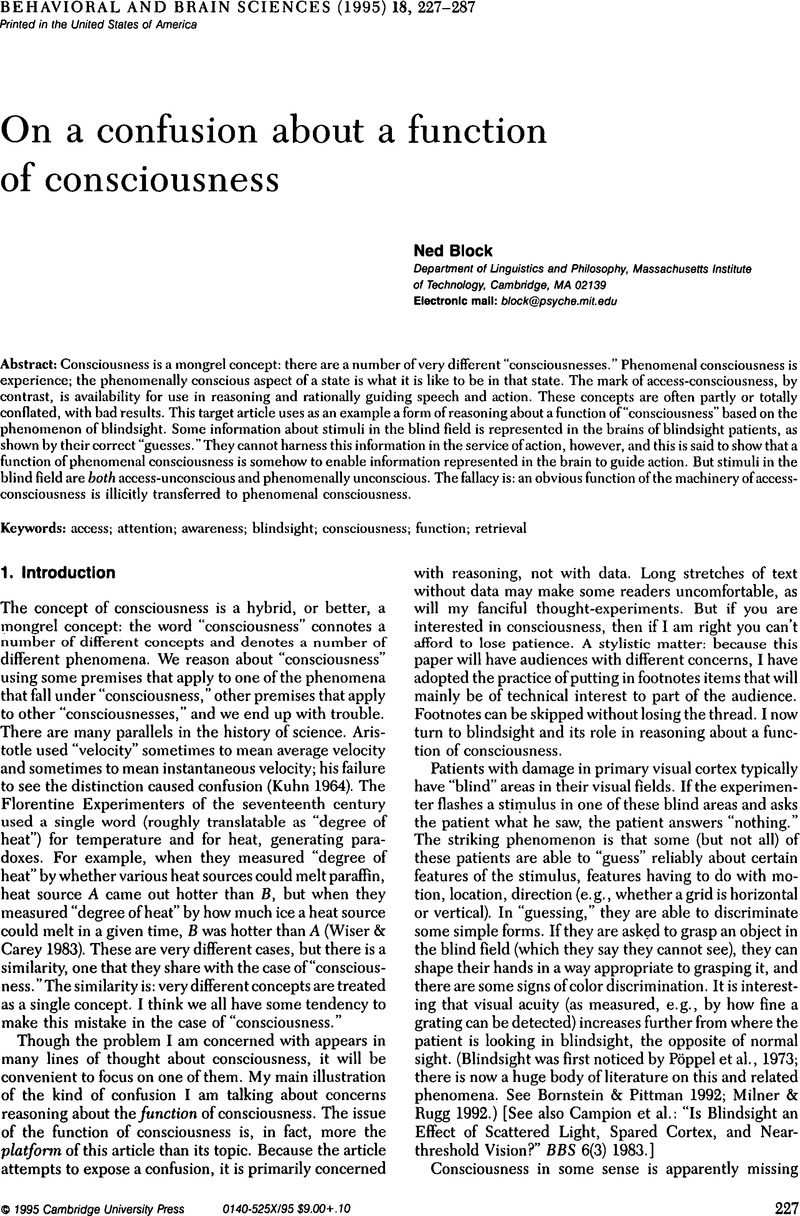Crossref Citations
This article has been cited by the following publications. This list is generated based on data provided by Crossref.
Mallatt, Jon
Blatt, Michael R.
Draguhn, Andreas
Robinson, David G.
and
Taiz, Lincoln
2021.
Debunking a myth: plant consciousness.
Protoplasma,
Vol. 258,
Issue. 3,
p.
459.
León, Felipe
and
Zahavi, Dan
2022.
Consciousness, philosophy, and neuroscience.
Acta Neurochirurgica,
Vol. 165,
Issue. 4,
p.
833.
Maleeh, Reza
and
Konjedi, Shaghayegh
2024.
Meta-awareness, mind wandering and negative mood in the context of the continuity hypothesis of dreaming.
Phenomenology and the Cognitive Sciences,
Vol. 23,
Issue. 1,
p.
105.





